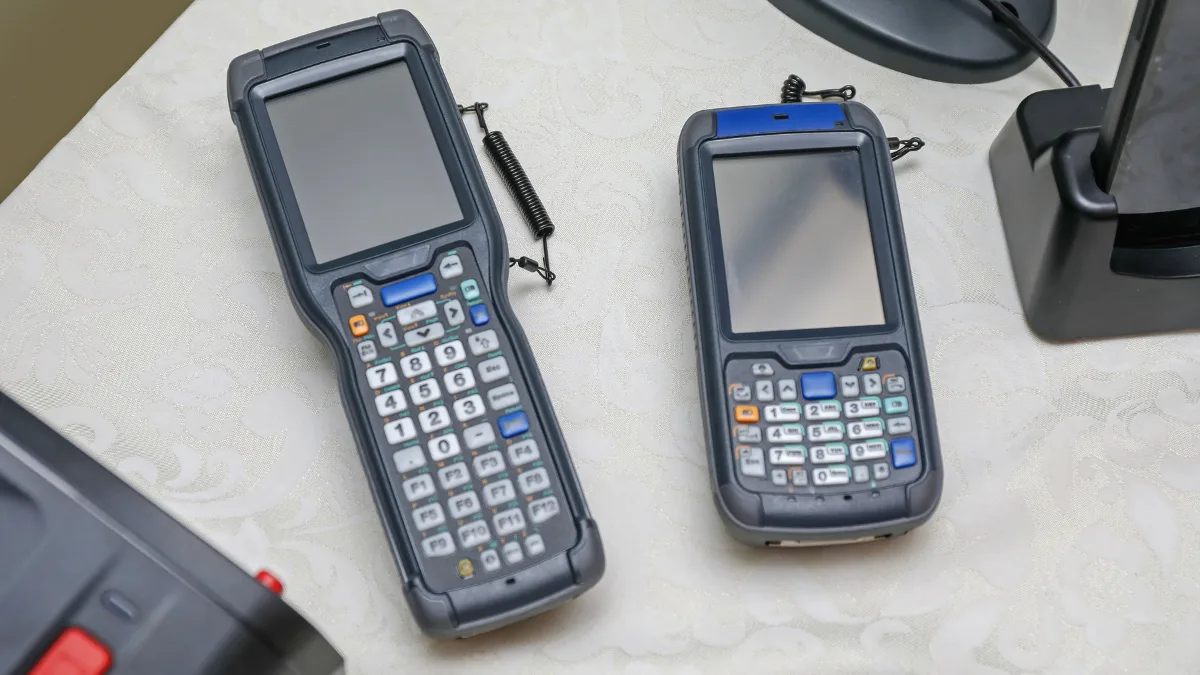Handheld computer uses communication technologies such as Bluetooth, NFC, RFID, or WiFi that operate within a specific frequency spectrum. This technology must meet the main requirements through a standard testing process to ensure its quality, security, and compliance with applicable regulations.
This standard handheld computer testing process is stated in the Ministerial Decree of the Ministry of Communication and Digital No. 260 of 2024 for Bluetooth, NFC, and RFID, and No. 12 of 2025 for WiFi which regulates various technical aspects, ranging from radio frequency, and transmit power, to testing methods.
Bluetooth, NFC, RFID, or WiFi technology, which is widely used in handheld computer devices must comply with this standard to be used legally in Indonesia.
Also Read
Table of Contents
New Regulations on Handheld Computer Technology

This regulation covers radio frequency requirements, maximum transmit power, and testing for wild emissions (spurious emissions).
Ministerial Decree 260 of 2024
The following are the standard specifications for Bluetooth:
| Radio Frequency Bands | Maximum Transmit Power | Spurious Emission Transmitter | Test Method |
| 2400-2483,5 MHz | ≤ 20dBm EIRP | EN 300 328 | EN 300 328 |
The following are the standard specifications for NFC:
| Frequency Band | Output Power | Spurious Emission | Test Method |
| 13.553 – 13.567 MHz | ≤ 20 dBm ERP or ≤ 94 dBµV/m at 10 meters distance | EN 302 291 or EN 300 330 | EN 302 291 or EN 300 330 |
The following are the standard specifications for RFID:
| Frequency Band | Output Power | Spurious Emission | Test Method |
| 16 – 150 kHz | ≤ 66 dBµA/m | EN 300 330 | EN 300 330 |
| 6765 – 6795 kHz | ≤ 42 dBµA/m | EN 300 330 | EN 300 330 |
| 7400 – 8800 kHz | ≤ 9 dBµA/m | EN 300 330 | EN 300 330 |
| 13.553 – 13.567 MHz | ≤ 94 dBµV/m | EN 302 291, EN 300 330 | EN 302 291, EN 300 330 |
| 433 – 434.79 MHz | ≤ 20dBm | EN 300 220 | EN 300 220 |
| 920 – 923 MHz | ≤ 26dBm | Standard 300 220, Standard 302 208 | Standard 300 220,Standard 302 208 |
| 2.4 – 2.4835 GHz | ≤ 20dBm | EN 300 440 | EN 300 440 |
Ministerial Decree 12 of 2025
The following are the standard specifications for WiFi:
| Frequency Band | Output Power | Spurious Emission | Test Method |
| 2400 – 2483,5 MHz | < 27dBm EIRP | EN 300 328 | EN 300 328 |
| 5150 – 5250MHz | EIRP < 23 dBm | EN 301 893 | EN 301 893 |
| 5250 – 5350MHz | EIRP < 23 dBm | EN 301 893 | EN 301 893 |
| 5725 – 5825MHz | EIRP < 23 dBm | EN 300 440 | EN 300 440 |
Handheld Computer Testing Standard

Ministerial Decree 260 of 2024
Handheld Computer is carried out to ensure the device meets technical standards Ministerial Decree of the Ministry of Communication and Digital No. 260 of 2024. Here are some of the main points in the test:
Radiofrequency testing
- Purpose: Ensure Bluetooth devices function without interfering with other devices using the same radio frequency.
- Method: Using FCC 15.247 or EN 300 328 standards to measure transmit power (RF output power).
Transmit power testing (RF output power)
- Objective: Assess whether the device transmits power below the 20 dBm ERP maximum limit or the maximum limit of 94 dBµV/m at a distance of 10 meters.
- Method: Using measuring instruments such as a spectrum analyzer to measure the device’s transmit power.
Wild emissions testing (spurious emissions)
- Purpose: Ensure the device does not produce emissions outside its working frequency band that could interfere with other devices.
- Standard: Refer to FCC 15.209 or EN 302 291.
Electromagnetic compatibility (EMC) testing
- Purpose: Assess device compatibility with the surrounding electromagnetic environment to prevent interference.
- Method: Referring to international standards such as EN 301 489.
Ministerial Decree 12 of 2025
Handheld Computer testing is carried out to ensure the device meets technical standards Ministerial Decree of the Ministry of Communication and Digital No. 12 of 2025. Here are some of the main points in the test:
- Electrical Safety: SNI IEC 60950-1;2015 or the more recent, SNI IEC 62368-1;2013 or the more recent, IEC 60950-1; IEC 62368-1; and/or other relevant IEC or SNI standards.
- EMC (Emission): ETSI EN 301 489 and/or ETSI EN 301 489-17; IEC CISPR 32; and/or SNI CISPR 32: 2015 or the more recent.
- EMC (Immunity): The Testing Method for immunity requirements is under the provisions in the THIRD Dictum of this Ministerial Decree.
- RF Output Power, Channel Bandwidth, Power Spectral Density, Spurious Emissions, and Out-of-band Emissions: ETSI EN 302 567 (lowest version is 2.1.1)
Handheld Computer Type Approval and Certification Process in Indonesia

For handheld computer devices to be used legally in Indonesia, certification from DJID is required. Here are the steps to get it:
Pre-testing the device
Before official testing, the device must be pre-tested first using measuring equipment such as a spectrum analyzer.
This helps ensure devices meet technical standards before being tested in authorized laboratories.
Testing at an official laboratory
After passing the pre-testing, the gadget will be sent to an assigned official research facility to experience testing according to the guidelines stipulated in the Ministerial Decree of the Ministry of Communication and Digital No. 260 of 2024 and No. 12 of 2025.
Issuance of certificates
After the device passes testing, an official certificate will be issued by DJID. This certificate is a requirement to market the device legally in Indonesia.
Tips to ensure standards compliance
- Learn the latest regulations: Make sure you understand every detail of the Ministerial Decree of the Ministry of Communication and Digital No. 260 of 2024 and No. 12 of 2025, including technical requirements and test methods.
- Perform pre-testing: Before official testing, perform pre-testing to ensure the device meets standards. If you don’t have a measuring instrument, use the DJID certification service which provides pre-testing services.
- Counsel a master: If this is your to begin with time looking for certification, consider utilizing the administrations of experienced DJID certification administrations. <UN>
















